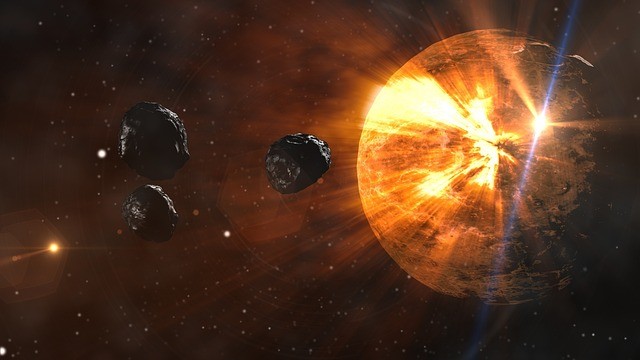The extinction of the dinosaurs is one of the most significant events in Earth’s history, capturing the imagination of scientists and the public alike. While the exact cause is still debated, evidence suggests that a combination of factors contributed to their demise around 66 million years ago, marking the end of the Cretaceous period and the beginning of the Paleogene period. One of the most widely accepted theories is the impact hypothesis, which suggests that a massive asteroid or comet impact played a crucial role in the extinction event. Here’s an overview of the leading theories and evidence surrounding the dinosaur extinction:
1. Impact Hypothesis:
- This theory proposes that a massive asteroid or comet struck Earth, causing widespread fires, a “nuclear winter” effect due to dust and debris in the atmosphere, and a dramatic drop in temperatures. The impact would have led to a rapid and severe disruption of ecosystems, affecting plant life, food chains, and climate. The most famous impact site associated with this theory is the Chicxulub crater in present-day Mexico.
2. Volcanic Activity:
- The Deccan Traps, a massive volcanic eruption in present-day India, occurred around the same time as the dinosaur extinction. The release of gases and particulates into the atmosphere from these volcanic events could have led to climate change, acid rain, and other environmental disruptions that affected ecosystems.
3. Climate Change:
- The combination of volcanic activity and asteroid impact could have led to a “double whammy” effect, causing rapid and extreme climate changes. Drastic temperature fluctuations, shifts in ocean currents, and changes in sea levels would have disrupted ecosystems and made survival challenging for many species.

4. Disease and Habitat Loss:
- Environmental disruptions caused by an impact or volcanic activity could have led to the spread of diseases and the destruction of habitats. These factors, combined with a less stable environment, could have caused widespread extinctions among species, including the dinosaurs.
5. Combination of Factors:
- Many scientists believe that a combination of these factors, rather than a single cause, contributed to the mass extinction. The impact hypothesis and volcanic activity, in particular, are seen as major contributors to the global disruptions that led to the extinction event.
Evidence supporting these theories includes the presence of a layer of iridium-rich clay found in rock formations around the world, which is consistent with an extraterrestrial impact. Fossils of plants, animals, and microorganisms from the Cretaceous-Paleogene boundary also reveal a sudden and significant decline in biodiversity.
While the exact sequence of events leading to the extinction of the dinosaurs remains a subject of ongoing research and debate, it’s clear that a complex interplay of factors, including extraterrestrial impacts, volcanic activity, and climate change, played a crucial role in reshaping the Earth’s ecosystems and allowing other life forms to flourish and evolve in the aftermath.











